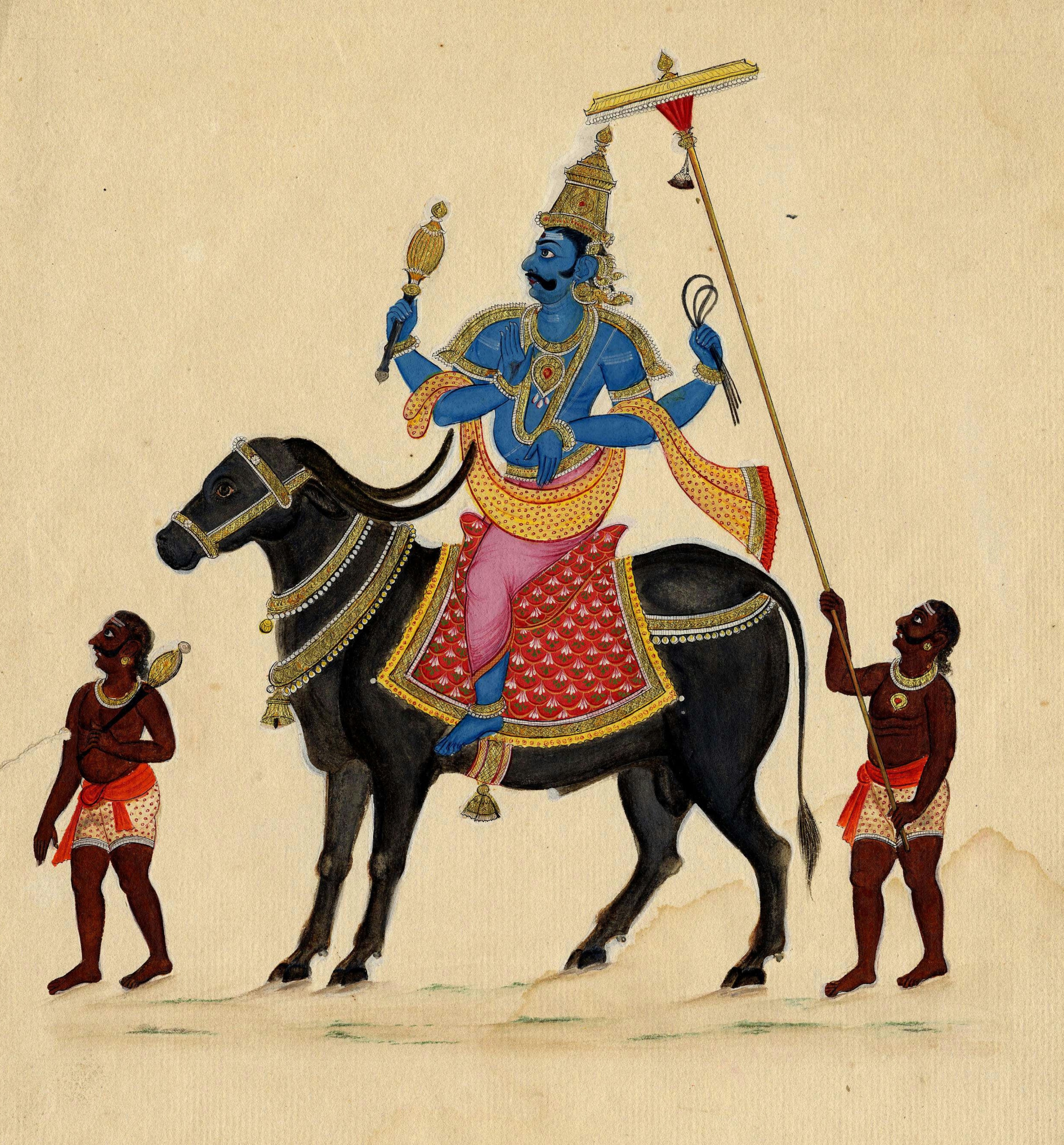Yama
 Yama (), also known as Kāla and Dharmarāja, is the Hindu god of death and justice, responsible for the dispensation of law and punishment of sinners in his abode, Naraka. He is often identified with Dharmadeva, the personification of ''Dharma'', though the two deities have different origins and myths.
Yama (), also known as Kāla and Dharmarāja, is the Hindu god of death and justice, responsible for the dispensation of law and punishment of sinners in his abode, Naraka. He is often identified with Dharmadeva, the personification of ''Dharma'', though the two deities have different origins and myths.In Vedic tradition, Yama was considered the first mortal who died and espied the way to the celestial abodes; as a result, he became the ruler of the departed. His role, characteristics, and abode have been expounded in texts such as the ''Upanishads'', the ''Ramayana'', the ''Mahabharata'', and the ''Puranas''.
Yama is described as the twin of Yami (Yamuna, Goddess of the Yamuna River, and the son of the god Surya (sun) (in earlier traditions Vivasvat) and Sanjna, also called Sandhya and Randala. He judges the souls of the dead and, depending on their deeds, assigns them to the realm of the Pitris (forefathers), Naraka (hell), or to be reborn on the earth.
Yama is one of the Lokapalas (guardians of the realms), appointed as the protector of the south direction. He is often depicted as a dark-complexioned man riding a buffalo and carrying a noose or mace to capture souls.
Yama was subsequently adopted by Buddhist, Chinese, Tibetan, Korean, and Japanese mythology as the king of hell. In modern culture, Yama has been depicted in various safety campaigns in India. Provided by Wikipedia
Showing 1 - 20 results of 108 for search 'Dharmaraj', query time: 0.06s
Refine Results
-
1
Modeling of three phase inverter for photovoltaic application by Dharmaraj, Philips
Published 2012Get full text
Get full text
Thesis -
2
Drawing of conical shells with a hollow urethane pad by Dharmaraj Neelamega Kannan
Published 2008Get full text
Thesis -
3
Demand response-based peer-to-peer energy trading among the prosumers and consumers by Dharmaraj Kanakadhurga, Natarajan Prabaharan
Published 2021-11-01Get full text
Article -
4
-
5
-
6
The Use of a Large Language Model for Cyberbullying Detection by Bayode Ogunleye, Babitha Dharmaraj
Published 2023-09-01Get full text
Article -
7
-
8
Conformer-Based Human Activity Recognition Using Inertial Measurement Units by Sowmiya Seenath, Menaka Dharmaraj
Published 2023-08-01Get full text
Article -
9
-
10
-
11
-
12
-
13
-
14
Hexonic derivatives as human GABA-AT inhibitors: A molecular docking approach by Dharmaraj Senthilkumar, Krishnan Anbarasu, Sivaraman Jayanthi
Published 2015-01-01Get full text
Article -
15
-
16
-
17
-
18
Fermentative production of carotenoids from marine actinomycetes by Selvakumar Dharmaraj, B Ashokkumar, K Dhevendaran
Published 2009-12-01Get full text
Article -
19
-
20
Majority Voting and Feature Selection Based Network Intrusion Detection System by Dharmaraj R. Patil, Tareek M. Pattewar
Published 2022-04-01Get full text
Article